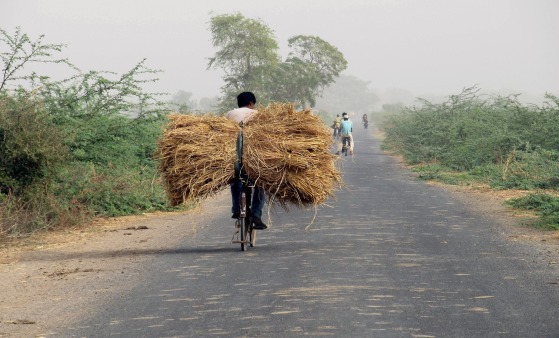Laurence Wilfred "Laurie" Baker, the award–winning British architect, who spent more than 60 years in India building homes that were ecologically sound and affordable for the poor and was renowned for his initiatives in low–cost housing, has died, April 1. He was 90.
Baker and several other architects founded the Center Of Science and Technology For Rural Development, which continues to provide quality housing for poor families.
Baker used local, mostly inexpensive, materials to construct quality buildings all over India in what became known as the Laurie Baker style. His techniques, including the use of perforated screens made with locally manufactured bricks, allowed natural movement of air to cool interiors in the sweltering southern state of Kerala, Baker's home for decades.
"For him, low cost did not mean low quality. It was all about using sustainable materials properly," said Sajan P.B., an architect who worked with Baker for more than 17 years.
The last designs Baker worked on were two slum rehabilitation projects that will provide over 1,000 homes to poor people in Trivandrum, the capital of Kerala.
Laurence Wilfred Baker was born March 2, 1917, in Birmingham, England, where he trained as an architect. A Quaker and conscientious objector in World War II, he worked with a medical team in China and Burma.
A chance encounter with Mohandas K. Gandhi on his way back home to England led Baker to promise the Indian leader he would return to India after the war and work with the poor in rural areas.
In 1946, Baker answered an advertisement placed by a Christian charity group called Mission to Lepers looking for architects to build hospitals in India. While working with the group he met Elizabeth Jacob, a medical doctor, and they were married in 1948.
He stayed in the country, moving to Trivandrum in 1970 and receiving Indian citizenship in 1988.
Baker's work with the mission took him all over the country and encouraged him to use the most easily available and cost–friendly local materials for construction, Sajan said.
Known as the 'brick master of Kerala,' the eco–friendly architect and engineer transformed individual creativity into collective expression through his efforts at addressing the housing problems of the country.
Known for integrating the factors of simplicity, order and regularity in his design, Baker offered successful solutions to the roofless millions through low–cost housing, in accordance to the needs, climate, lifestyle and preferences of clients.
Rejecting the designs alien to the place, his use of local tiles and bricks in construction and the optimum use of scarce materials, an ideology of creative sustenance, is a reflection of the extension of the traditional ideas to contemporary usage. Be it the huge mansions, private residences, church or other institutions, Baker's buildings have an aura of tranquility, freedom with provision for aeration and a touch that is ethereal and down to earth.
Exhibiting the personal style of a virtuoso, Baker has heralded a movement in the history of Kerala architecture. In a place known for its rich architectural heritage, his master–craftsmanship found sensible and had carved a niche for himself, as a doyen among the architects.
Baker received the United Nations Habitat Award in 1992 and the International Union of Architects' Award in 1993.
Baker has been buried in Trivandrum. He is survived by his wife Elizabeth, son Tilak and daughters Vidya and Heidi.




